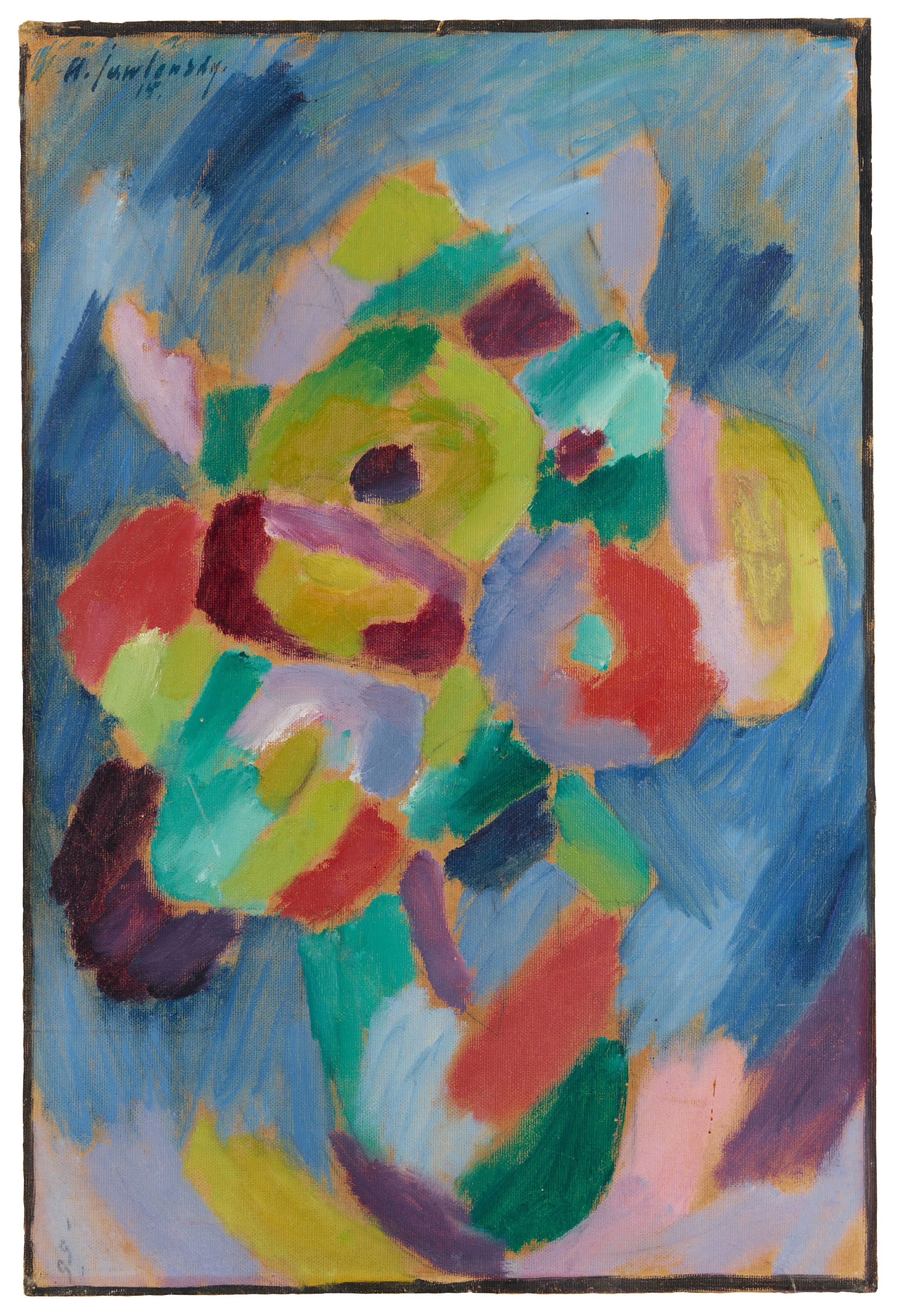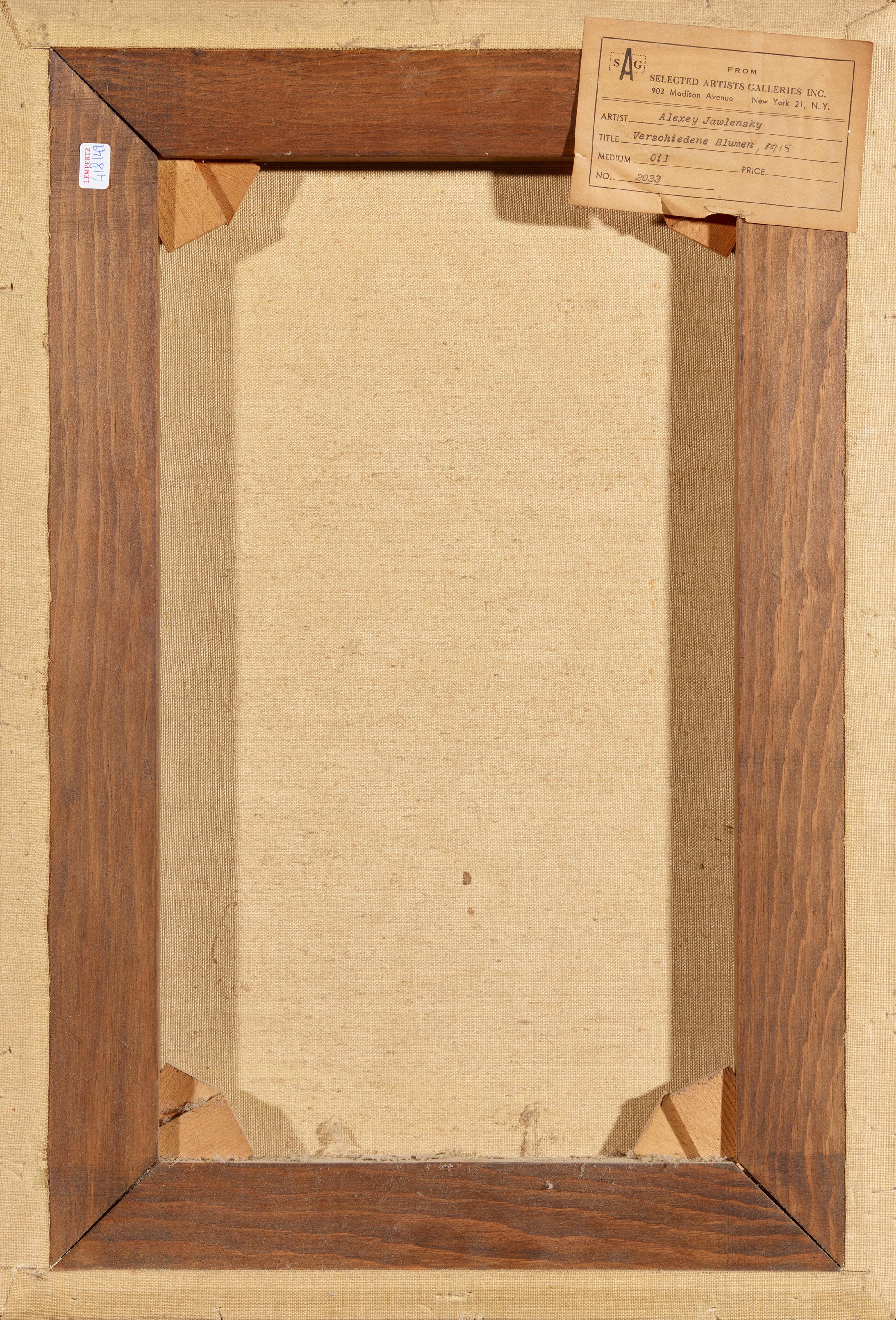Alexej von Jawlensky
Blumen im Krug
1915
Oil over pencil on linen textured paper, mounted on canvas. 52.3 x 35 cm (53 x 36 cm). Framed. Signed and dated 'A. Jawlensky 15' in blue upper left. - In very good condition with fresh colours, few tiny retouchings.
Jawlensky repeatedly painted still lifes throughout his entire career. Initially inspired by Paul Cezanne and later seeking orientation in Henri Matisse, he arrived at his own chromatic and compositional style around 1911/1912. He primarily arranged fruit, jugs, statuettes and – repeatedly – flowers in front of boldly patterned wall hangings to paint them in luminous colours outlined with black contours. In the “Blumen im Krug” here, he has done without the contour lines and used a broad brush to apply the thinned-down colours in a feathery and soft manner comparable to that of his “Variations”. The colours red, violet, yellow, blue and green only summarily describe the flowers and the broad-bellied vase. In the areas around the outside, the boundaries between the flowers and background become blurred and, as a result, the individual passages appear abstract upon closer inspection. In Jawlensky’s memoirs, which are a helpful source regarding the significance of his floral still lifes, he writes: “When I felt some relief in my hands, I immediately painted large pictures, only still lifes, mostly flowers. They are very beautiful in their colours and were a big success with people” (cited in: exh. cat. Munich/Baden-Baden 1983, p. 332).
The cheerful colours of this floral still life lead us to infer that this was a peaceful and calm period in Jawlensky’s life. However, this is misleading: as a Russian citizen, the outbreak of the First World War in 1914 meant that he had to leave Germany within 48 hours– together with Marianne von Werefkin and Helene Nesnakomoff, the mother of his then 12-year-old son.
Catalogue Raisonné
M. Jawlensky/Pieroni-Jawlensky/A. Jawlensky Bianconi vol. II, no. 651 with ill. p. 56
Certificate
We would like to thank Angelica Jawlensky Bianconi, Muralto, for the supplementary information.
Provenance
Selected Artists Galleries (SAG), New York (label on stretcher, titled and dated "Verschiedene Blumen 1915"); Studio Ellen Forest, Roskin, Amsterdam; Willem van Leusden, Amsterdam; Mrs. Selma van Cornewal, Maarssen; Christie's London, Auction 9 July 1965, lot 93; Private collection New York; Math. Lempertz’sche Kunstversteigerung 497, Köln, 1967, lot 378; Math. Lempertz’sche Kunstversteigerung 528, Köln, 24 Nov. 1972, lot 460; Private collection, Rhineland
Literature
Angelica Jawlensky Bianconi, La raffigurazione del Dio visibile, in: exh. cat. Alexej von Jawlensky, Milan 1995, ill. p. 22




